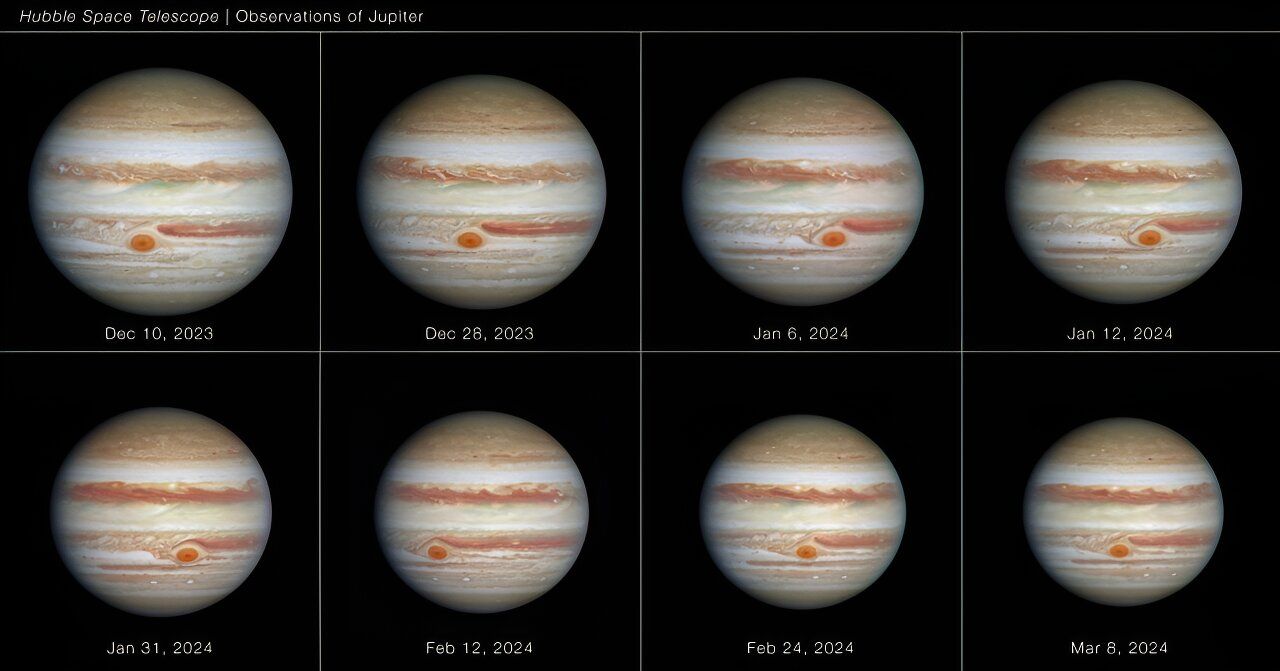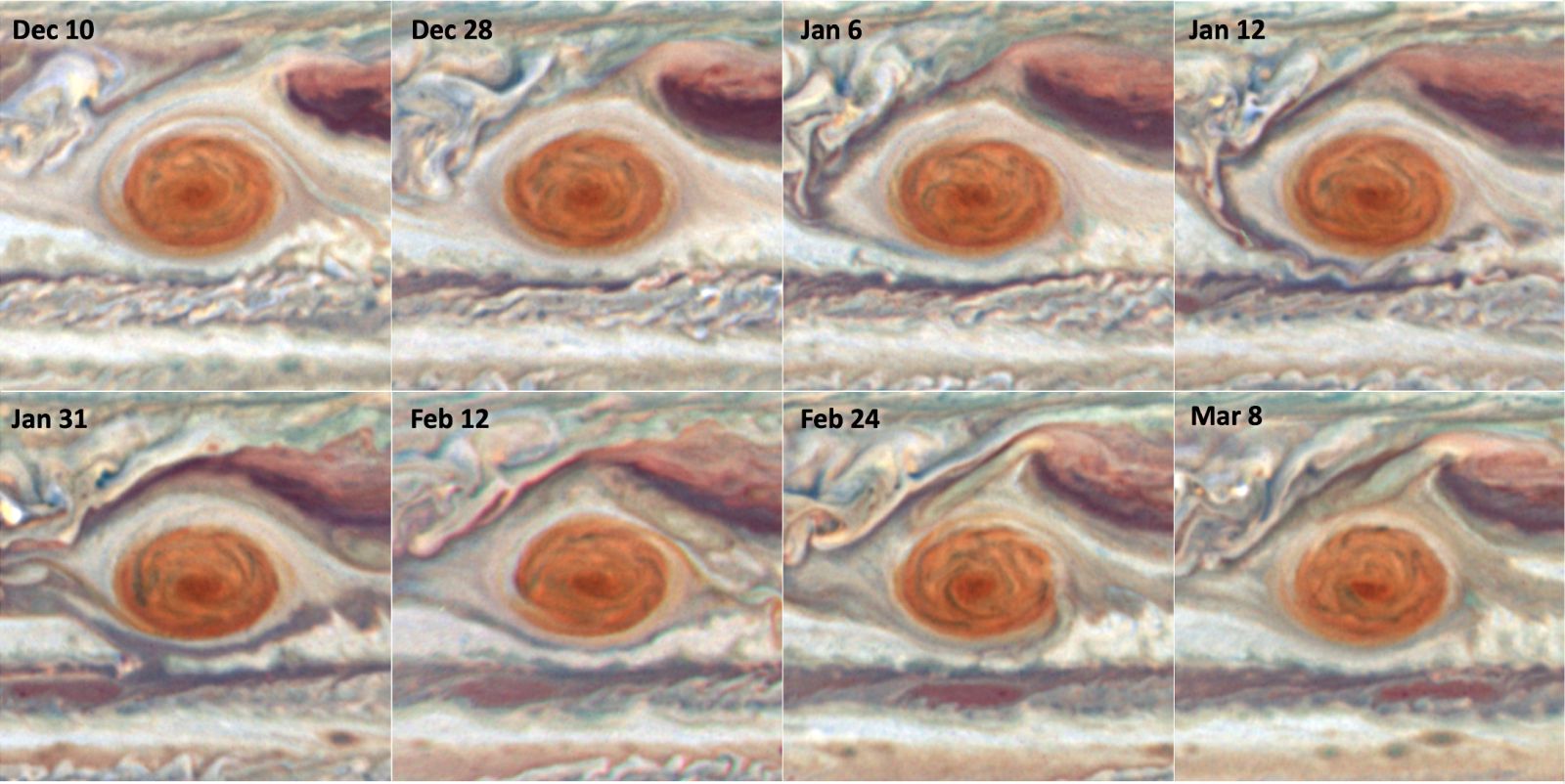Jupiter: the Great Red Spot is deforming
Follow us on Google News (click on ☆)
For more than 150 years, the Great Red Spot has intrigued astronomers. But this new behavior, captured by the Hubble telescope between December 2023 and March 2024, sheds new light on this giant storm, often perceived as a stable vortex.

Astronomers used data from the Hubble Space Telescope over a 90-day period (from December 2023 to March 2024), when Jupiter was situated between 392 and 512 million miles from the Sun (630 to 824 million kilometers). They measured the size, shape, brightness, color, and vorticity of the Great Red Spot during a full oscillation cycle.
The observations show that the Great Red Spot is not as stable as it seems. It changes shape, oscillating and moving like gelatin. The cause of this 90-day oscillation remains unknown.
These observations are part of a program led by Amy Simon from NASA's Goddard Space Flight Center.
Credit: NASA, ESA, STScI, Amy Simon (NASA-GSFC); Image processing: Joseph DePasquale (STScI).
Scientists have noticed that this storm, despite being massive and formidable, contracts and stretches slightly while vibrating, much like a mass of gelatin. Amy Simon, from NASA, explains that this is the first time Hubble's high-resolution images have enabled the detection of such changes in the storm's shape. Until now, this shape oscillation had never been observed.
The oscillation is all the more puzzling because its origin remains unknown. The Red Spot has always been considered trapped between two powerful jet streams, which seem to keep it in place. However, during these observations, the giant storm displayed significant variations in size, color, and brightness. With each contraction, its core became brighter in ultraviolet light, suggesting that internal atmospheric changes might be responsible.
The research team noted that the Red Spot speeds up and slows down as it interacts with the surrounding jet streams. However, unlike Neptune's storms, which unpredictably change latitude, the Red Spot appears to be trapped in its current band of winds.
For a few years now, astronomers have been monitoring the gradual shrinking of this colossal storm. The Red Spot is slowly shrinking, and Simon predicts that it will continue to decrease in size until it reaches a stable size. Once it becomes small enough, it could stabilize within its wind band, where it would be permanently trapped.

Color maps were created for each date, using specific filters for red, green, and blue. They were enhanced for better detail visibility. Each map shows an area around −23° latitude and the longitude of the Great Red Spot. A "gap" can be seen above the Great Red Spot on December 10, February 24, and March 8.
Researchers hope that new high-resolution observations will help unravel the mysteries of this oscillation. So far, Hubble has observed only one cycle, but the preliminary results are already very promising.